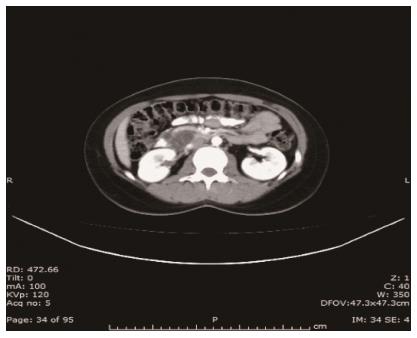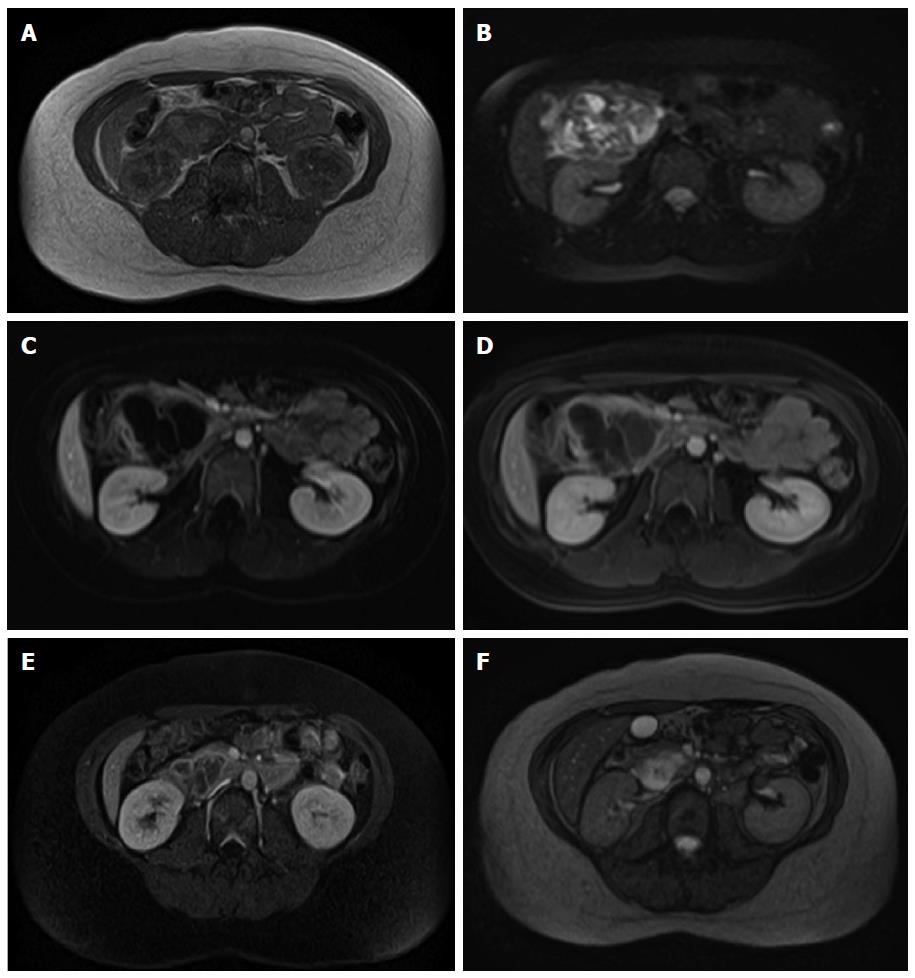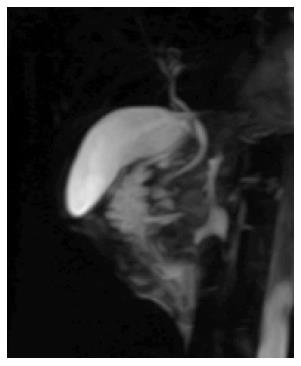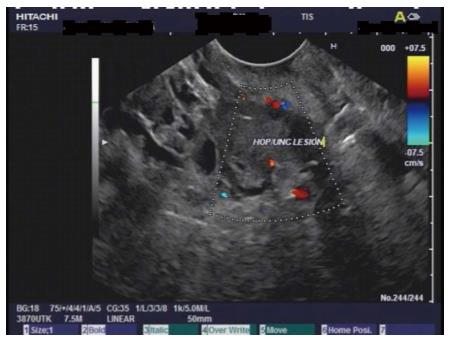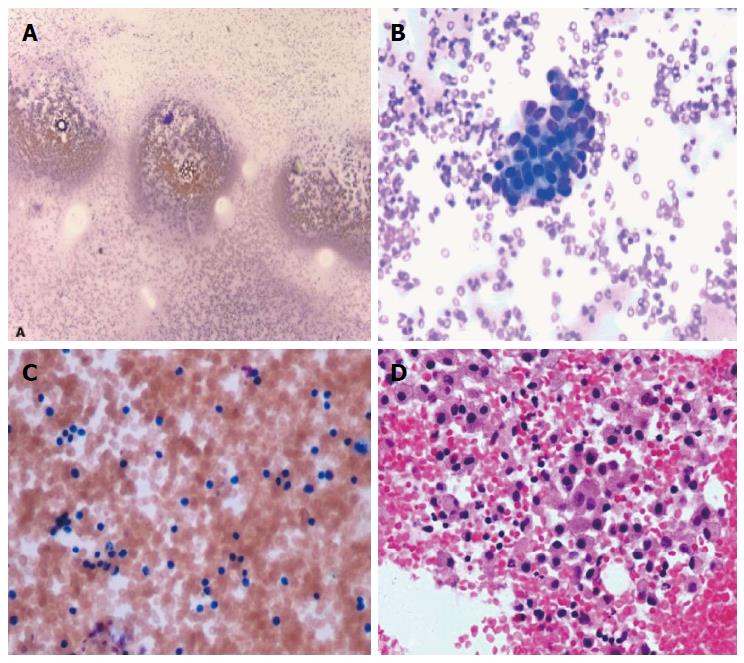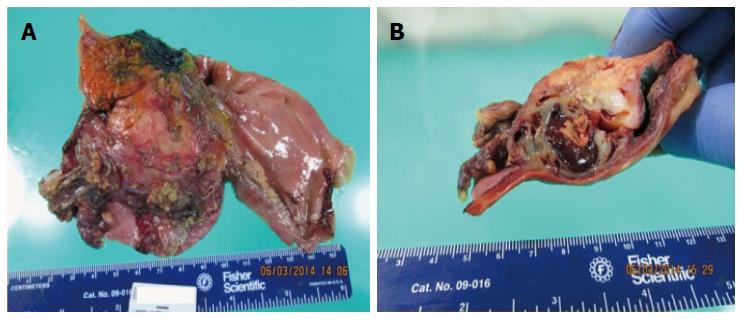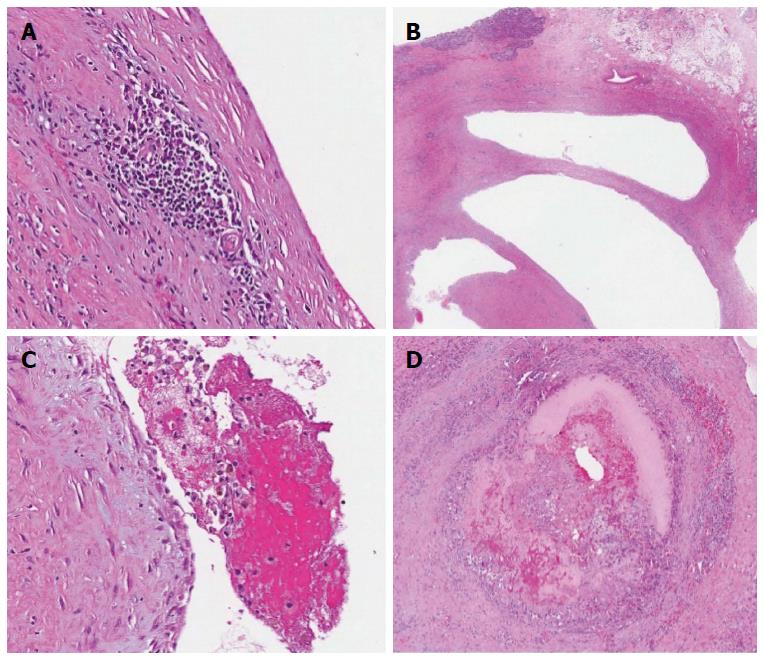Copyright
©The Author(s) 2015.
World J Gastroenterol. Sep 7, 2015; 21(33): 9793-9802
Published online Sep 7, 2015. doi: 10.3748/wjg.v21.i33.9793
Published online Sep 7, 2015. doi: 10.3748/wjg.v21.i33.9793
Figure 1 Contrast computed tomography scan showed a non-enhancing cystic lesion in the head of the pancreas.
Figure 2 Magnetic resonance imaging.
Variable intensity in T1 weighted (A) and T2 weighted (B) imaging. Overall, the hemangioma had hypo-intensity in T1W and hyper-intensity in T2W imaging. Peripheral enhancement after gadolinium injection with gradual centripetal filling-in (C, D: Arterial phase; E: Venous; and F: Delayed venous phase) was noticed. Intensity was parallel to that of aorta. A central cystic area remained hypo-intense.
Figure 3 Magnetic resonance cholangiopancreatography demonstrated no ductal dilation.
Figure 4 Endoscopic ultrasound: Complex cyst at the head of pancreas, devoid of Doppler signals, with normal surrounding parenchyma and without any ductal or vascular abnormality.
Figure 5 Fine needle aspiration cytology.
Direct smear showed few clusters of cells without atypia (A, B) and increased lymphocytes (C); Cell block showed clusters of histiocytes, some of which had light brown material in their cytoplasm, suggestive of hemosiderin (D).
Figure 6 Gross pathology showing head of pancreas lesion (A) and cystic lesion with thick septa and recent hemorrhage evident on cross section (B).
Figure 7 Histopathology.
A: The hemangioma displaced the exocrine pancreas; B: It had blood filled ectatic vessels with thin endothelium lining large cavernous spaces and aggregates of chronic inflammatory cells in the surrounding fibrous tissue; C: The lumina of the vessels contained macrophages, some containing hemosiderin; D: One vessel with organizing thrombus containing fibrin and foamy macrophages.
- Citation: Mondal U, Henkes N, Henkes D, Rosenkranz L. Cavernous hemangioma of adult pancreas: A case report and literature review. World J Gastroenterol 2015; 21(33): 9793-9802
- URL: https://www.wjgnet.com/1007-9327/full/v21/i33/9793.htm
- DOI: https://dx.doi.org/10.3748/wjg.v21.i33.9793









